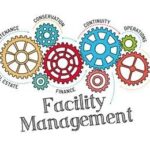
Facility Management Software: What to Look For
October 21, 2024
The Role of Facility Management in Employee Productivity
October 23, 2024Managing a facility involves handling various day-to-day operations, but one critical aspect that can define the effectiveness of a facility manager is the ability to handle emergencies. Emergencies can range from fires and floods to security breaches, medical crises, or structural failures. How you respond to these situations not only impacts the safety and well-being of occupants but also the long-term reputation and viability of the facility. In this guide, we will walk through the essential steps and best practices for handling emergency situations in facility management, ensuring preparedness and swift response.
1. Understanding the Types of Emergencies in Facility Management
Emergencies can be categorized into different types, each requiring a unique approach and response. Facility managers must be aware of these possible scenarios to develop appropriate emergency plans.
1.1 Natural Disasters
Natural disasters like floods, hurricanes, earthquakes, and severe storms can cause significant damage to buildings and disrupt operations. These types of emergencies require advanced preparation, including building reinforcements, clear evacuation routes, and real-time monitoring of weather systems.
1.2 Fires and Explosions
Fires are one of the most common and dangerous emergencies in any facility. They can arise from faulty electrical systems, human error, or natural causes such as lightning. Facility managers must ensure that fire detection and suppression systems are in place, and staff are trained in fire safety protocols.
1.3 Medical Emergencies
Medical emergencies, such as sudden illness, heart attacks, or accidents, are unavoidable in facilities with a large number of occupants. Ensuring quick access to first aid, defibrillators, and emergency medical services is crucial in saving lives.
1.4 Security Breaches
Security emergencies include unauthorized access, theft, vandalism, or violent incidents such as active shooter situations. Having a robust security system, including surveillance, access control, and trained security personnel, is essential for responding to these crises.
1.5 Utility Failures
A failure in essential utilities like electricity, water, gas, or HVAC systems can quickly escalate into an emergency if not handled promptly. Such situations can cause operational shutdowns, endanger occupants’ safety, and even lead to secondary emergencies such as fires.
2. Preparing for Emergencies
Preparation is the most critical phase of handling emergency situations. A facility manager’s ability to develop comprehensive emergency plans and ensure preparedness will dictate how effectively an emergency is handled.
2.1 Conducting Risk Assessments
Before an emergency happens, it’s essential to know what types of emergencies are most likely to occur in your facility. Risk assessments involve identifying potential hazards within and outside the facility. These include environmental factors, human-related risks, and system vulnerabilities. Regular risk assessments help in creating targeted emergency plans.
2.2 Developing Emergency Plans
Once risks are identified, the next step is to develop detailed emergency response plans. Each type of emergency should have a corresponding protocol that addresses how to respond, who is responsible, and what resources are needed. Plans should include:
- Evacuation routes and muster points.
- Communication protocols.
- Roles and responsibilities for staff.
- Resources like first-aid kits, fire extinguishers, and emergency signage.
2.3 Training Staff and Occupants
Even the best emergency plan is ineffective if people are not trained to follow it. Regular training sessions and drills should be held for both staff and occupants. These sessions should cover emergency evacuation procedures, how to use fire extinguishers, administering basic first aid, and the correct way to communicate during emergencies.
2.4 Establishing a Chain of Command
In the chaos of an emergency, clear leadership is critical. A facility manager should establish a chain of command where roles are defined, and decision-making authority is delegated. This ensures that responses are coordinated, efficient, and that staff know who to report to during an emergency.
3. Responding to Emergencies in Real-Time
No matter how well prepared a facility is, the actual emergency situation will require quick thinking and decisive action. Here are the steps for managing real-time emergencies.
3.1 Initiating the Emergency Plan
The moment an emergency is detected, the facility manager or the designated leader should activate the emergency plan. This could involve triggering alarms, informing emergency services, and mobilizing the crisis management team. The speed at which the emergency plan is enacted can significantly impact the outcome.
3.2 Ensuring Effective Communication
In emergencies, communication breakdowns can lead to confusion and exacerbate the situation. Facility managers should ensure that there is a reliable communication system in place, such as two-way radios, PA systems, or emergency notification apps. Clear, concise information should be communicated to all occupants, including instructions on evacuation or sheltering in place.
3.3 Coordinating with Emergency Responders
For certain emergencies, such as fires or medical crises, facility managers will need to work closely with external emergency services like fire departments, medical teams, or the police. Ensure that responders are familiar with the facility’s layout and that there is a designated point of contact for seamless coordination.
3.4 Prioritizing Occupant Safety
The primary responsibility in any emergency is the safety of the people within the facility. Evacuation or containment strategies should be executed promptly, with special attention to those who may require additional assistance, such as people with disabilities. Facility managers should ensure that no one is left behind and that all occupants are accounted for at the muster points.
4. Post-Emergency Recovery
Once the immediate emergency has passed, the work is far from over. Facility managers must shift their focus to recovery, restoration, and ensuring that the facility returns to normal operations as quickly as possible.
4.1 Assessing Damage
After an emergency, a thorough inspection of the facility must be conducted to assess any structural or operational damage. This includes checking for fire damage, water damage, structural weaknesses, and damage to electrical and HVAC systems. Facility managers should work with engineers and safety inspectors to ensure the building is safe for re-entry.
4.2 Coordinating Repairs and Cleanup
Facility managers should coordinate with maintenance teams and external contractors to carry out repairs and clean up any debris or hazards caused by the emergency. Quick action in this stage is crucial to prevent further damage, especially in cases of water or fire emergencies.
4.3 Reviewing the Emergency Response
It’s important to evaluate how well the emergency plan was executed and what areas could be improved. This review should involve collecting feedback from staff, occupants, and emergency responders. What worked well? What challenges were encountered? This information is valuable for improving future emergency plans and training programs.
4.4 Providing Support to Occupants
Emergencies can be traumatic, especially in cases of severe damage, injuries, or fatalities. Facility managers should ensure that counseling services and support are available to those affected. Providing a space for emotional recovery is just as important as addressing the physical aspects of recovery.
5. Creating a Culture of Safety
The most effective way to handle emergencies is by fostering a culture of safety and preparedness throughout the facility. This means embedding emergency preparedness into the daily operations and mindset of everyone in the facility, from staff to occupants.
5.1 Regular Drills and Training
Emergency preparedness is not a one-time event. Regular drills and refresher training sessions are essential to keep everyone up to date on procedures and ready to act in an emergency. Fire drills, evacuation exercises, and first-aid workshops should be conducted at least twice a year.
5.2 Updating Emergency Plans
As facilities evolve and new risks emerge, emergency plans need to be updated regularly. Facility managers should review and revise their emergency procedures annually or after any major incidents, taking into account any changes in infrastructure, personnel, or technology.
5.3 Leveraging Technology for Emergency Management
Technology plays a crucial role in modern emergency management. Facility managers can use real-time monitoring systems, automated emergency alerts, and building management software to enhance their response capabilities. Surveillance systems, access control, and fire safety equipment should also be regularly maintained and upgraded to ensure peak performance during emergencies.
5.4 Promoting Safety Awareness
One of the simplest but most effective ways to handle emergencies is by ensuring that everyone in the facility is aware of potential risks and knows what to do. This can be achieved through ongoing communication, safety workshops, and visible signage outlining emergency procedures.
6. Conclusion
Handling emergency situations in facility management requires a proactive approach that emphasizes preparation, real-time response, and post-crisis recovery. By conducting thorough risk assessments, developing robust emergency plans, and fostering a culture of safety, facility managers can minimize the impact of emergencies and ensure the safety of everyone within the facility. Effective communication, leadership, and coordination with emergency responders are the cornerstones of managing crises in real-time, while a comprehensive recovery plan ensures a swift return to normal operations.
Ultimately, the key to successful emergency management is staying ahead of the risks and being prepared for anything that might come your way. Whether it’s a natural disaster, fire, or medical crisis, the right preparation and response can make all the difference in protecting your facility and its occupants.



